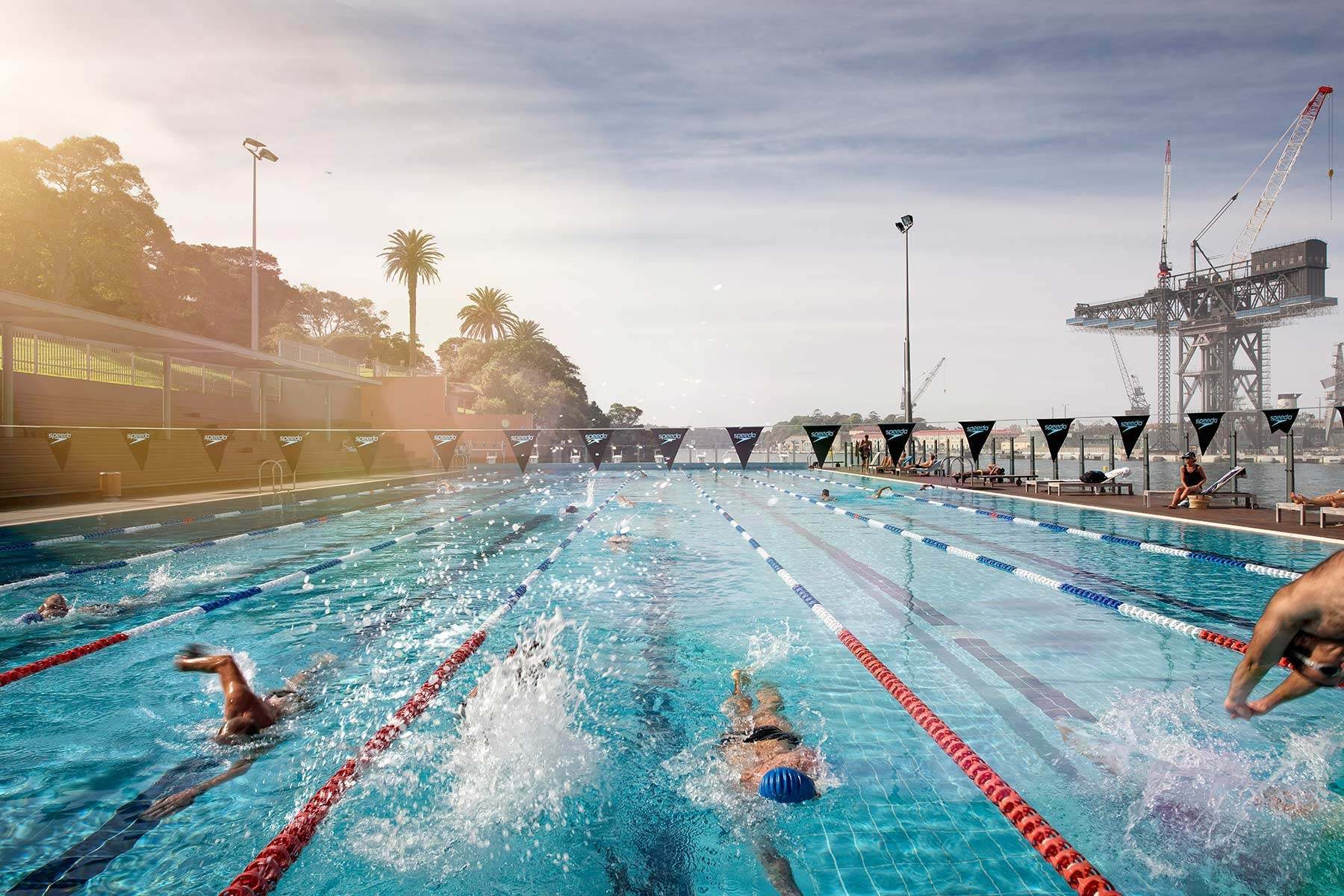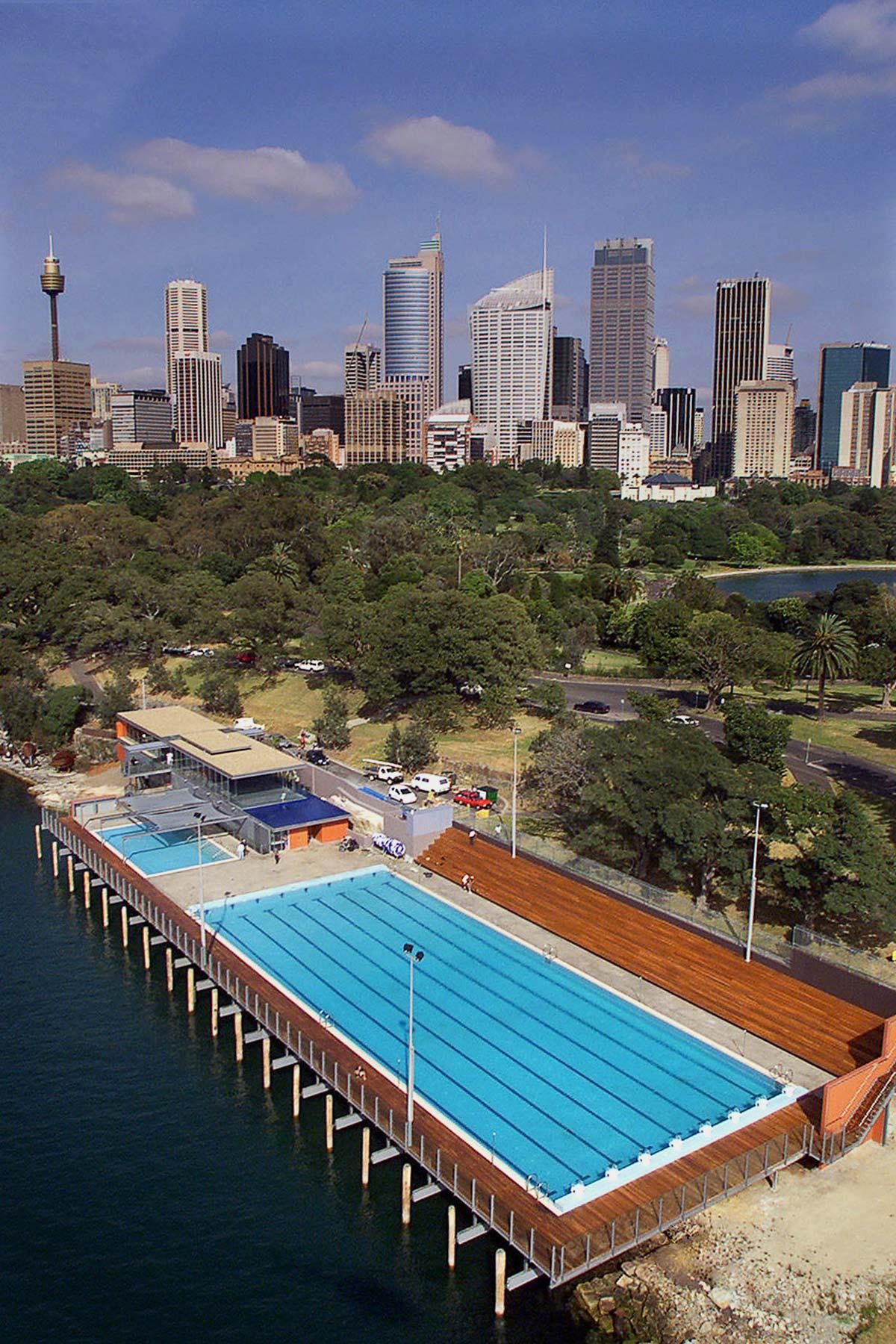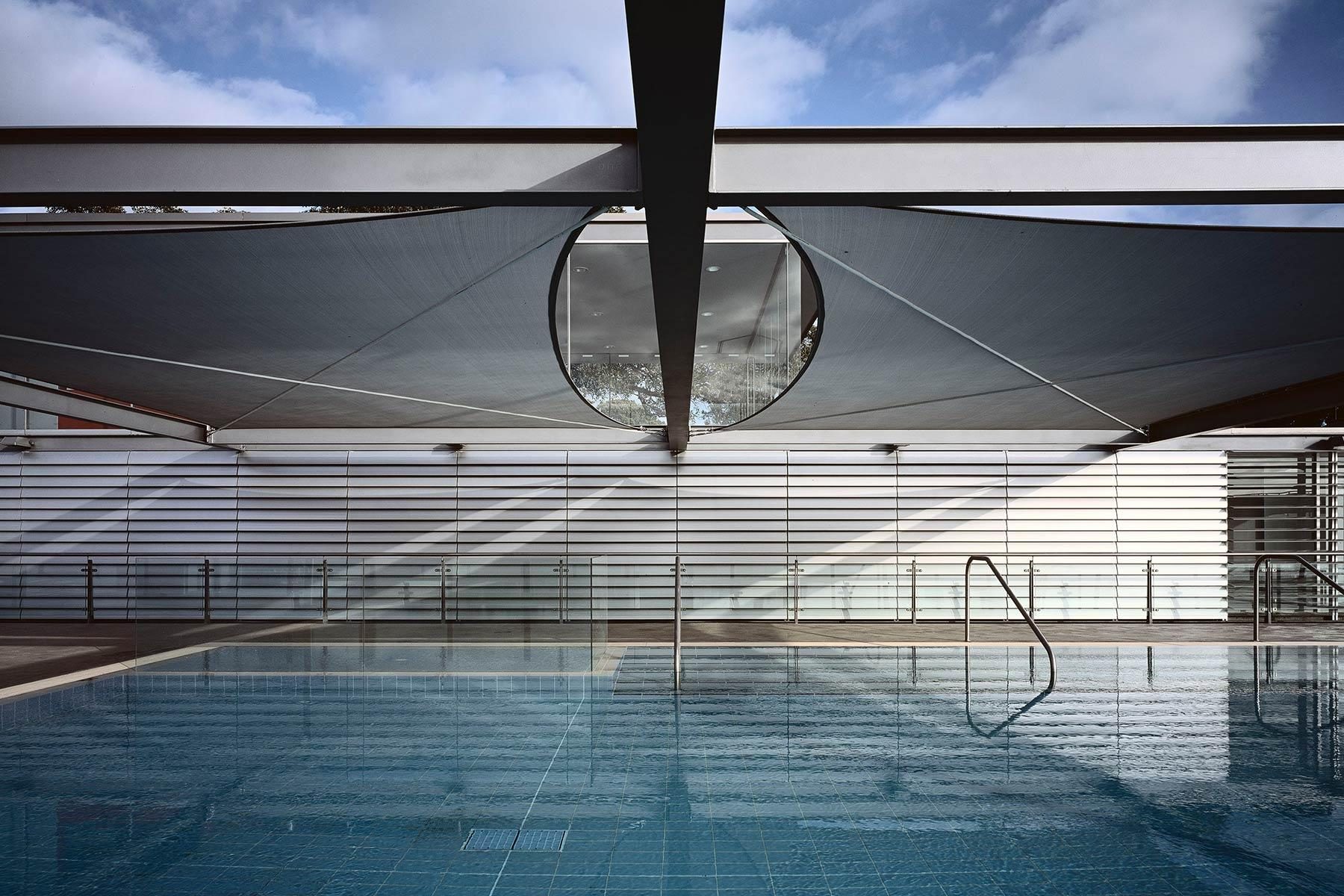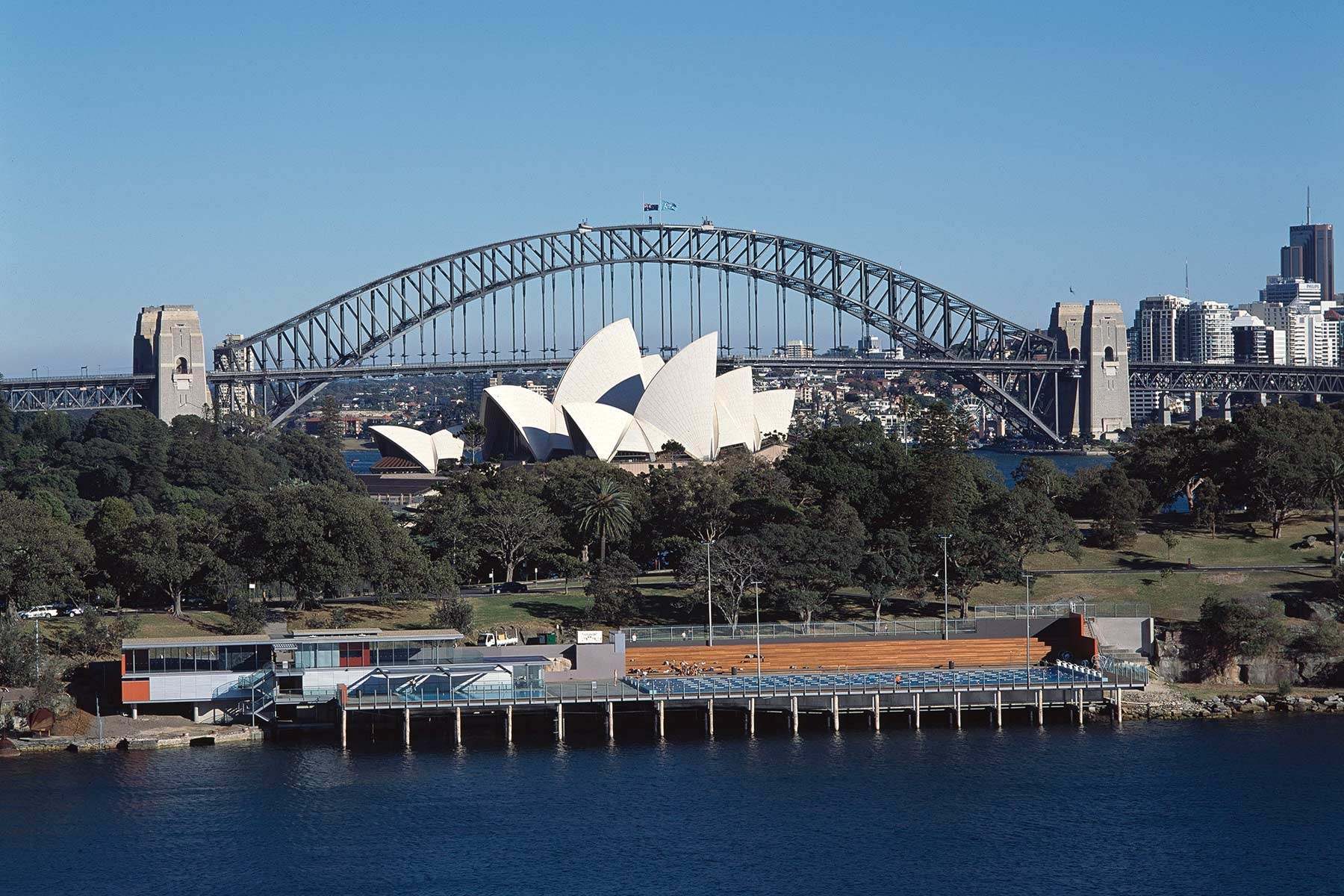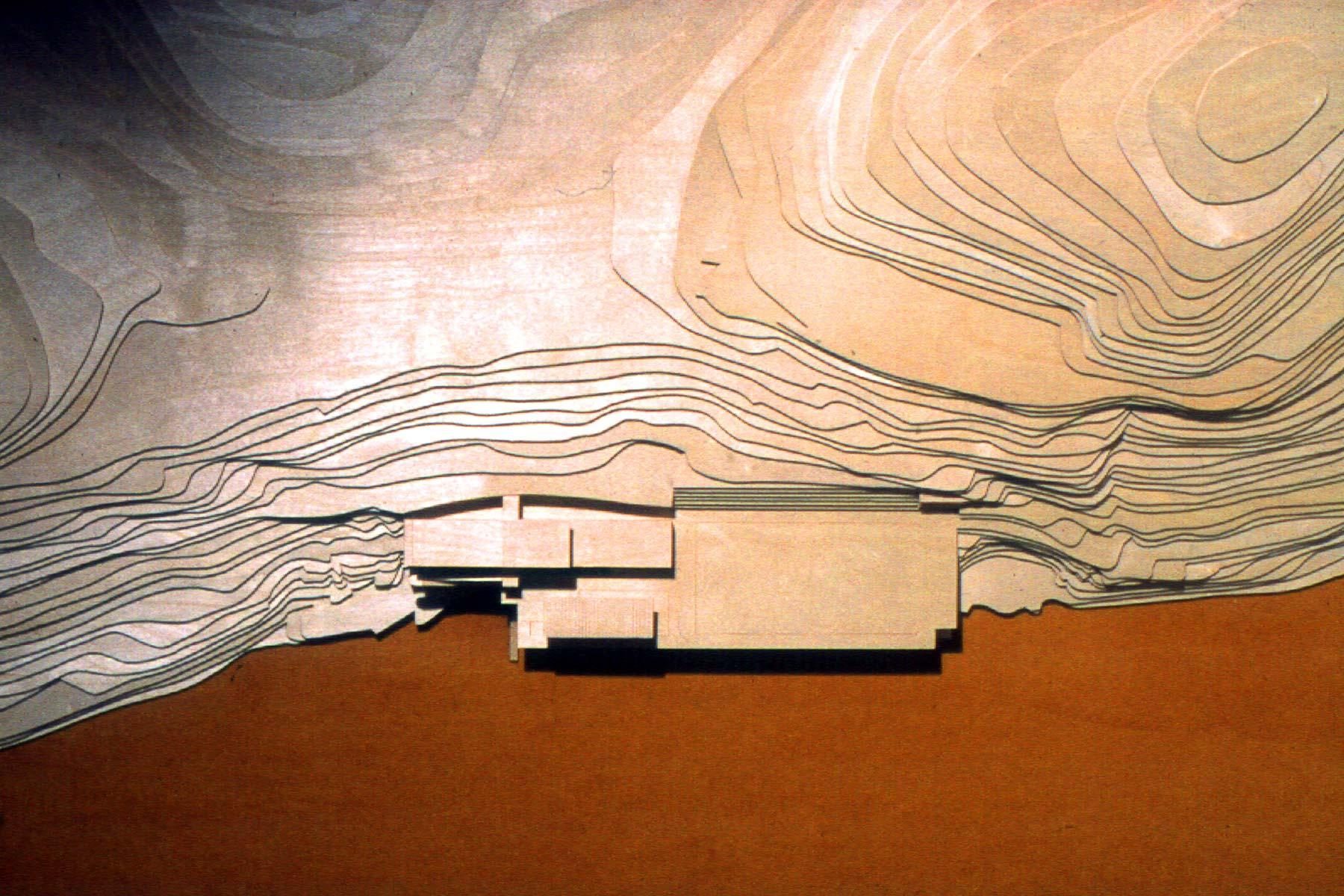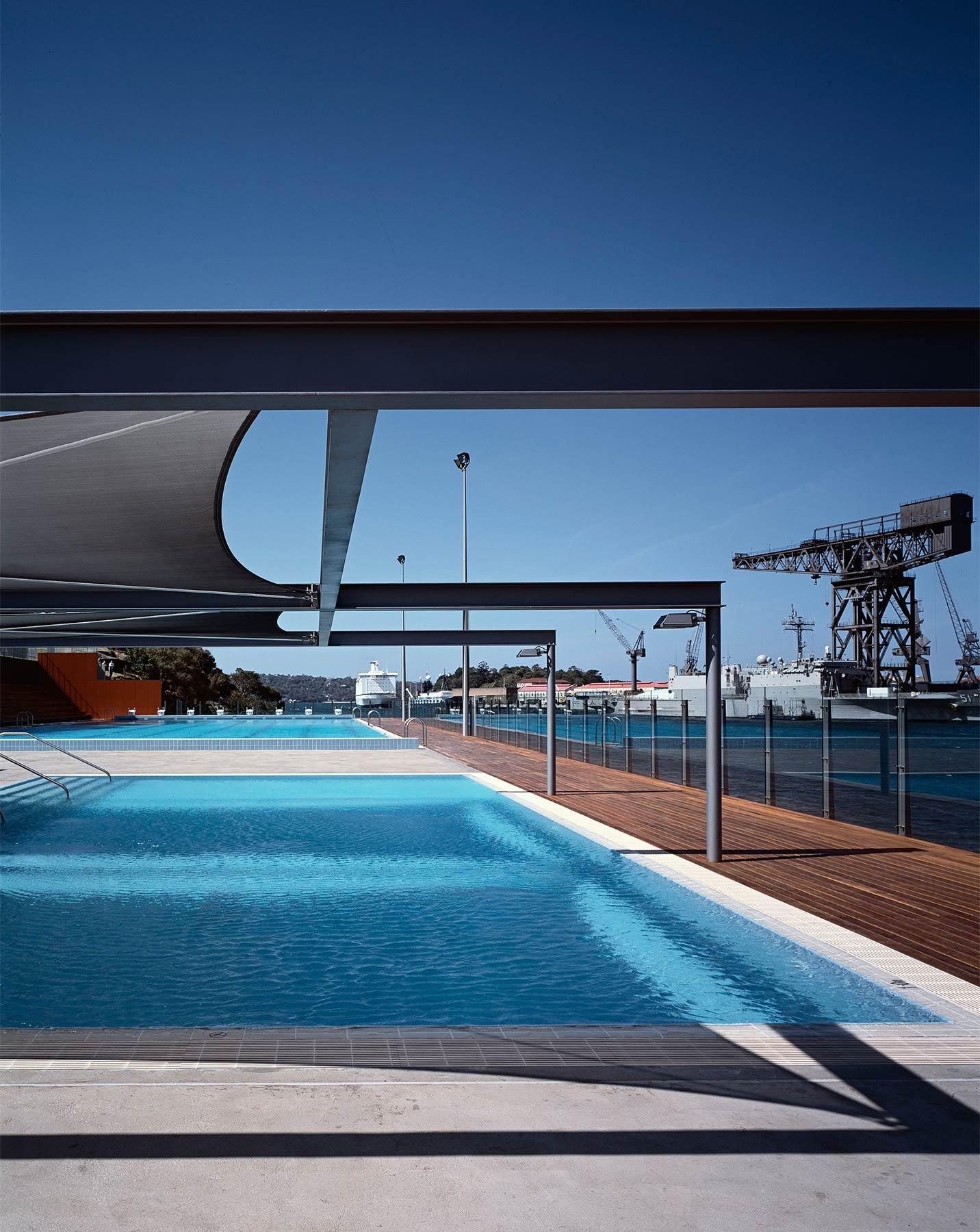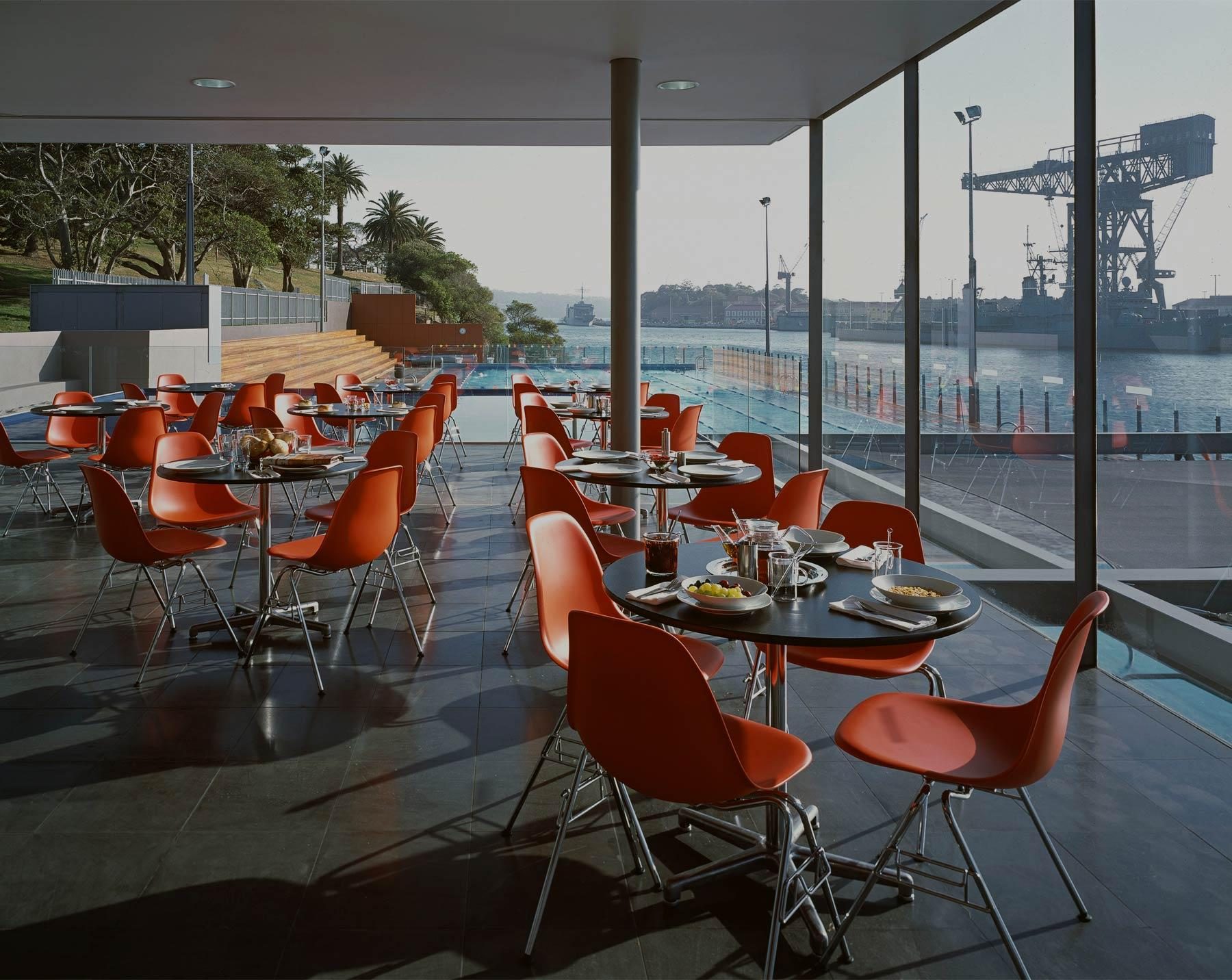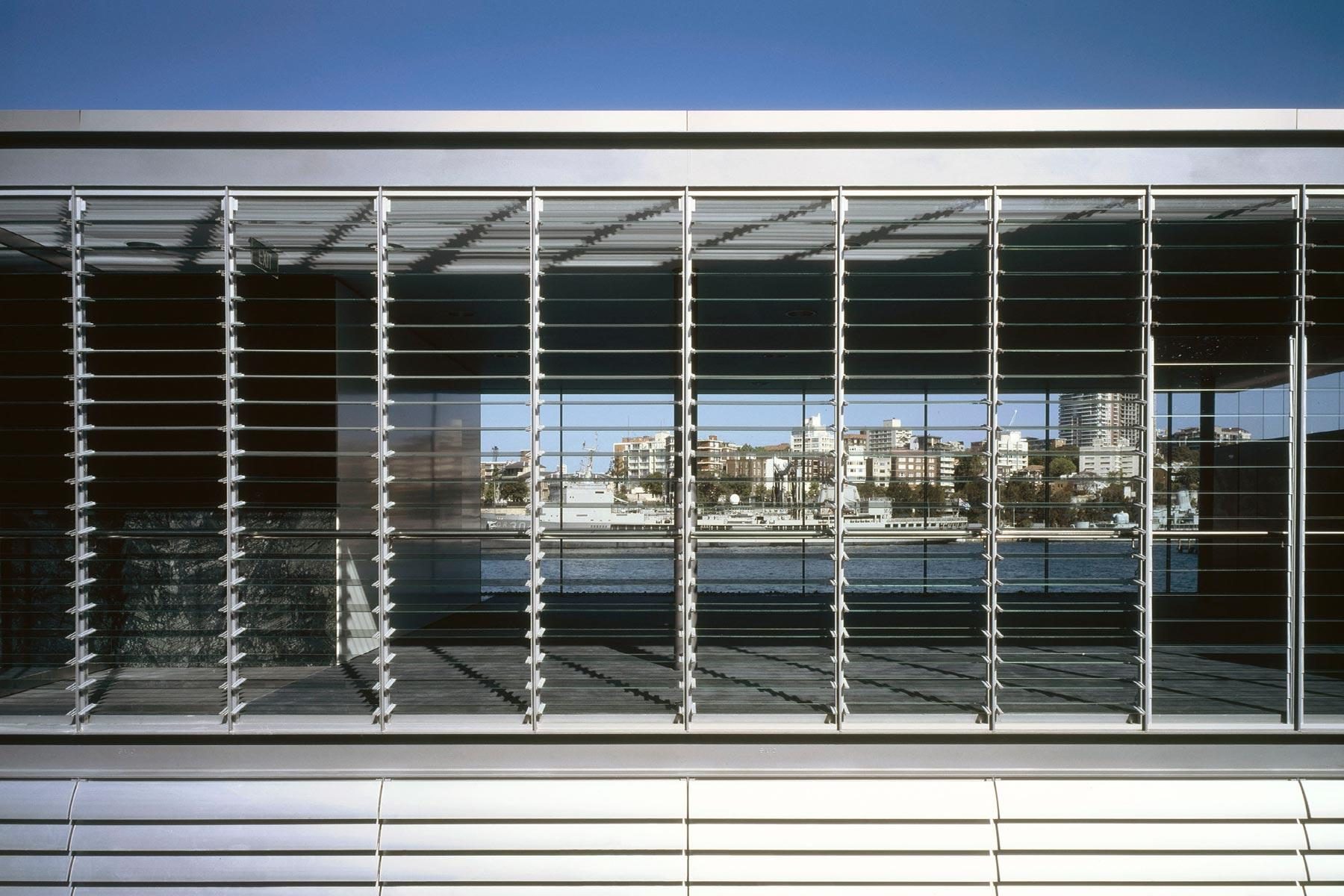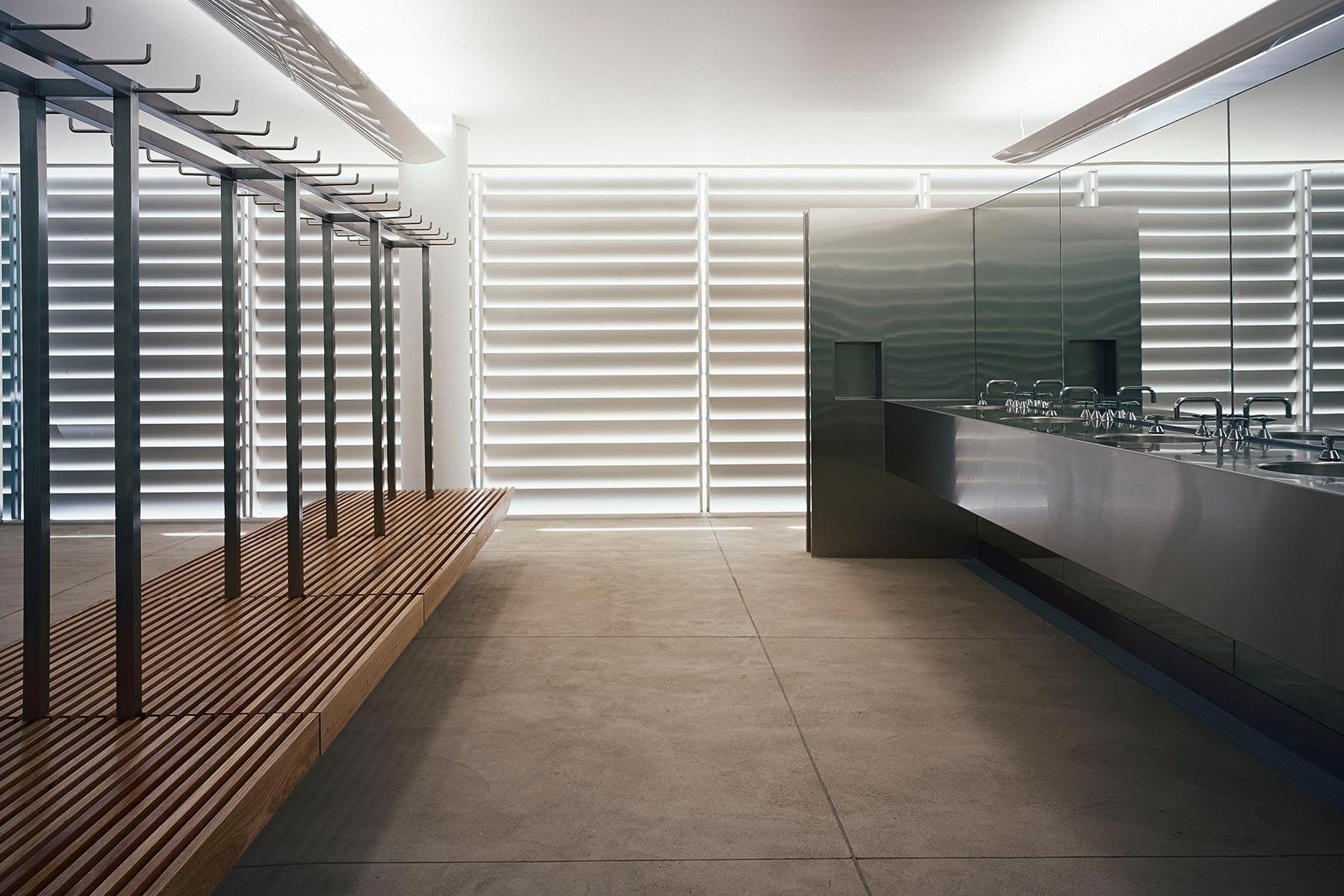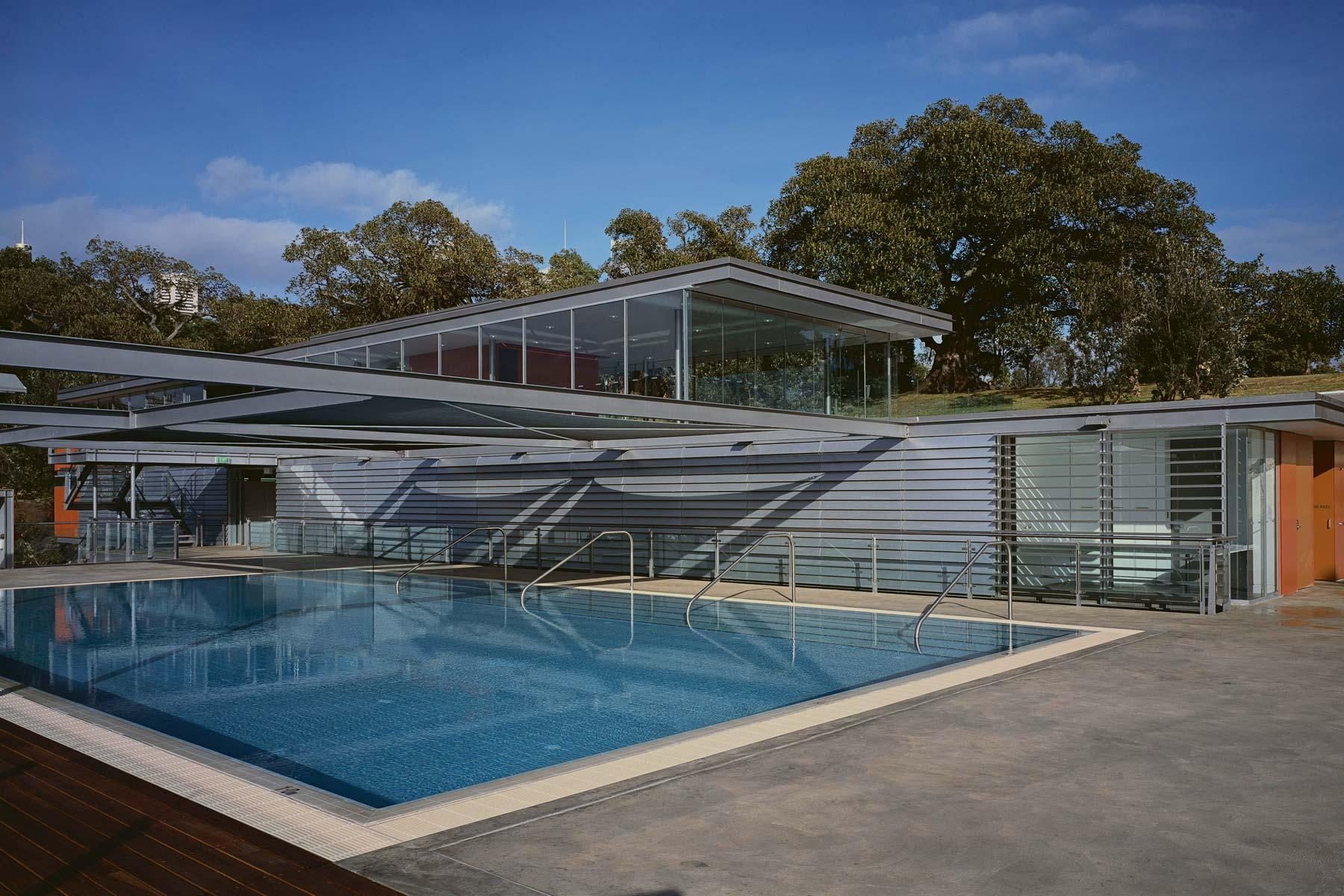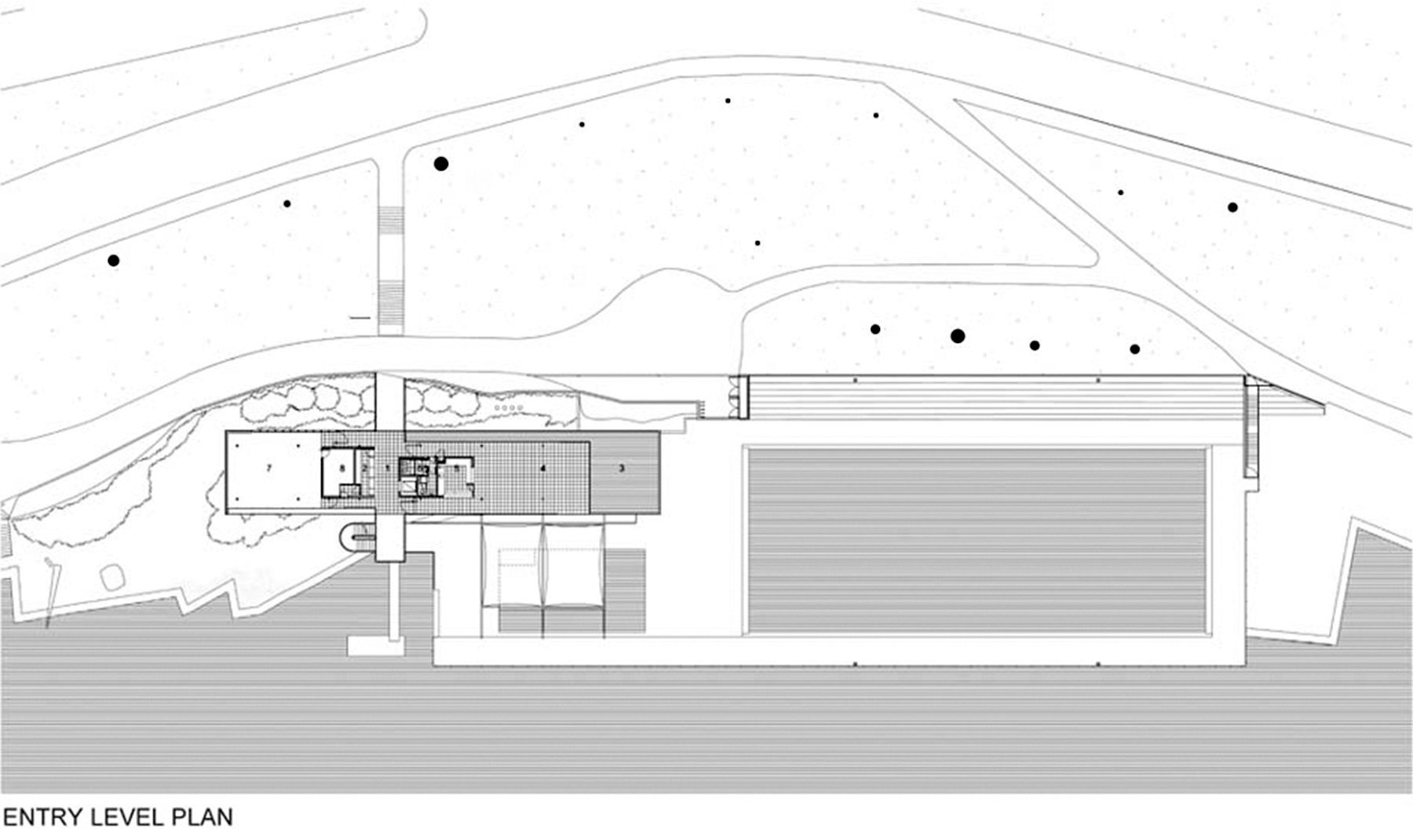Named after Australian freestyle swimming champion Andrew Murray ‘Boy’ Charlton, who broke a world record on this site in 1924, going on to win a gold medal at the Paris Olympic Games later that year, the Andrew ‘Boy’ Charlton Pool is a special place in Sydney’s psyche.
This distinctive landmark overlooks Woolloomooloo Bay adjacent to the Royal Botanical Garden. The pool redevelopment attracted a great deal of attention in 1998 from both the public and the 155 architects who competed in the architectural competition.
A watering hole for the Indigenous community well before European settlement, it remained a swimming destination through to the 1940’s when a rudimentary concrete pool was constructed. Given the pool’s location and significance, Sydney City Council decided it was time to create something more befitting. The brief included an Olympic-sized 50-metre saltwater pool, a 20-metre-pool for those learning to swim, together with a smaller and shallower toddlers’ pool. A ticket office, café and function space, together with separate change rooms were also included. “I approached the design more as a landscape element than a building, given its spectacular location and topography,” says Lippmann, who ‘beat the field’, treating the pool and amenities as engrained in the terrain. The gravel roof and pools create a series of cascading planes of earth and water which connect the terrain with the harbour. Looking down to the bay from the Lady Macquarie’s Drive one appreciates the broader context and experiences the excitement of naval vessels coming in and out of port.
